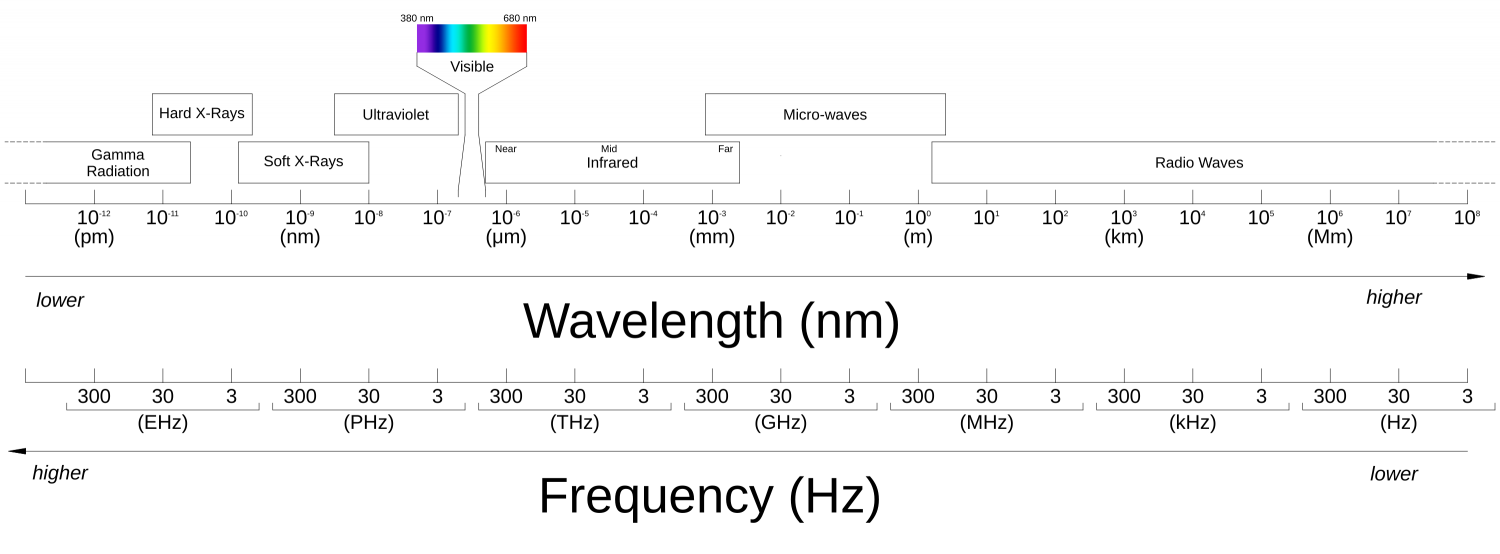Table of Contents
Fiber Optics
General information
The speed of light in free space is $c = 3.10⁸ (m/s)$
Fiber optics propagate light using the refractive index of different materials.
It is the ratio of the speed of light in free space to the speed of light in a given material.
In fiber-optics, spectrum notation is generally stated in wavelength ($nm$) over frequency ($Hz$) because it is easier to use.
$\lambda=\frac{c}{f}$ and $f=\frac{c}{\lambda}$ where $\lambda$ is wavelength ($nm$) and $f$ is frequency ($Hz$) and $c$ is the speed of light (approx. 2.10⁸ m/s)
As wavelength increases, frequency decreases.
When discussing Dense Wavelength Division Multiplexing (DWDM), frequency is preferred, in $THz$
Electromagnetic spectrum
Infra-red and Ultra-violet are prefixed using frequency in mind :
- infrared has a lower frequency than the red in the visible spectrum (thus a higher wavelength)
- ultraviolets have a higher frequency than the edge of our visible spectrum (thus a lower wavelength)
Advantages over copper connections
- Extremely wide system bandwith : With LEDs (5 ns response time) the bandwith is limited to about 100 MHz but with a laser light source data rates of 10 Gbps are possible on a single-mode fiber. By multiplexing, one can reach hundreds of Gbps.
- Immune to electrostatic interference : External electrical noise does not affect the data transmission in fiber optics. However, other metallic points (connections, components, etc.) may be affected.
- No crosstalk : Contrary to copper cable, light in fiber optics do not interfere from one fiber to another even if they are very close to each other.
- Low signal attenuation : Typical attenuation is about 0.03 dB per 100 feet.
- Cost competitive : With massive deployment costs are dropping.
- No electricity involved
- No corrosion
- Harder to intercept/tap
Requires efficient optical connectors due to excessive loss that can occur at connection points.
To Do on this page
Insert electromagnetic chart.
Link to wikipedia page on light spectrum.
